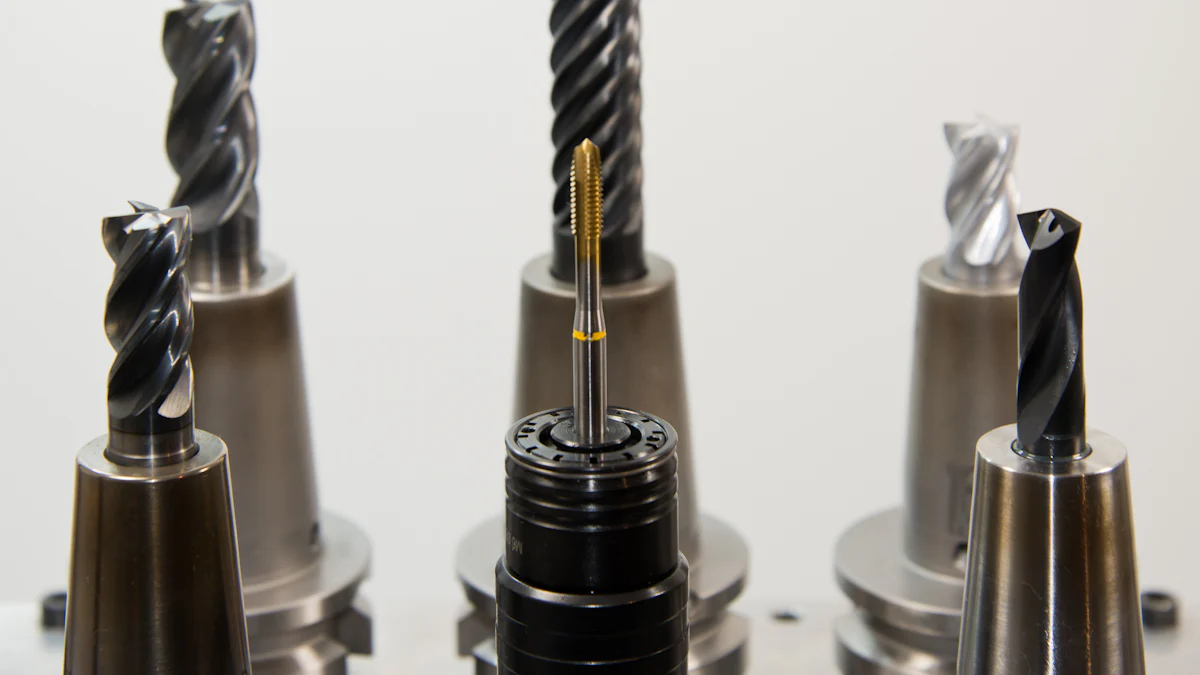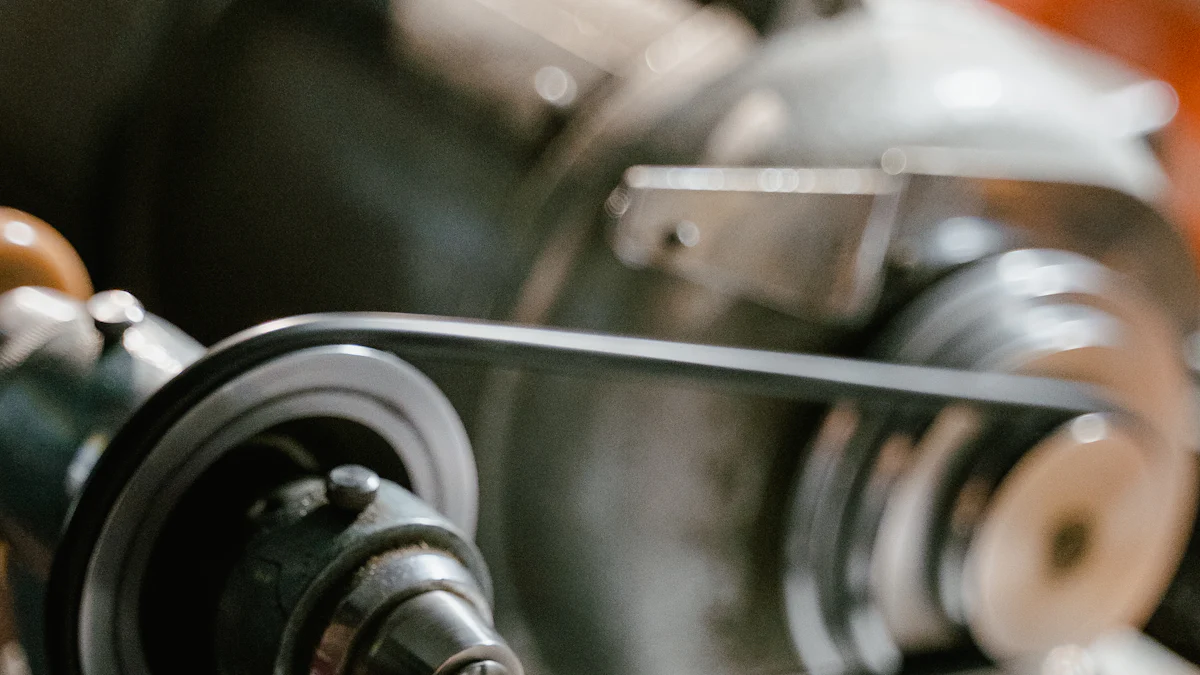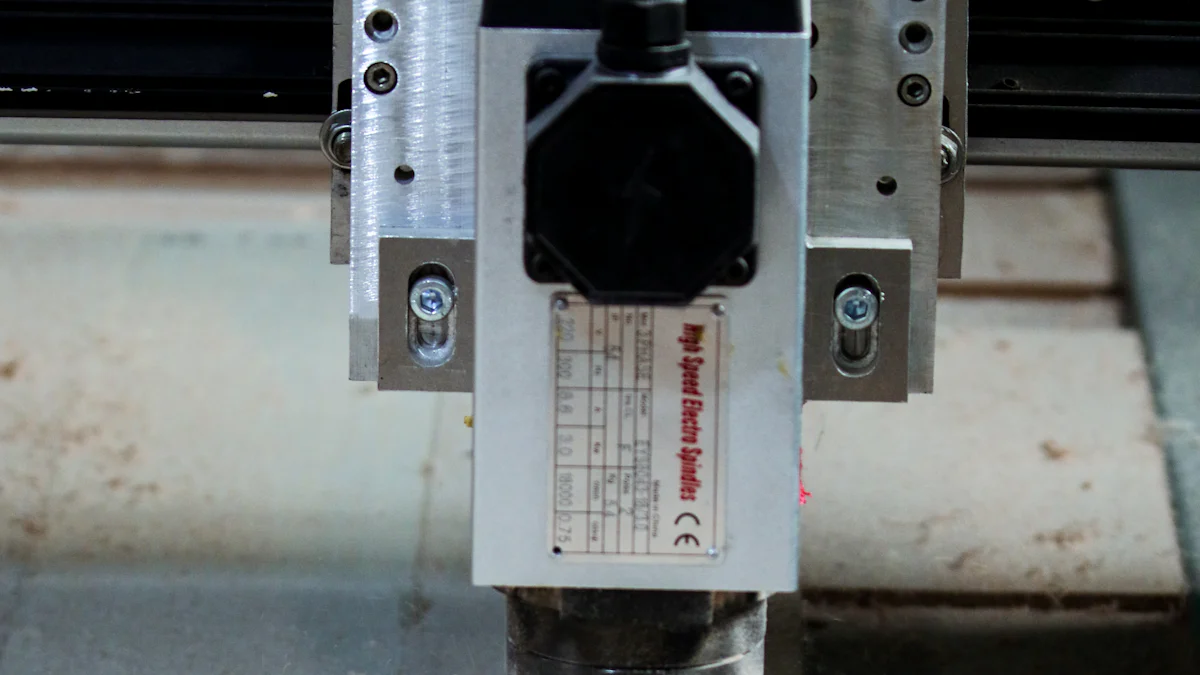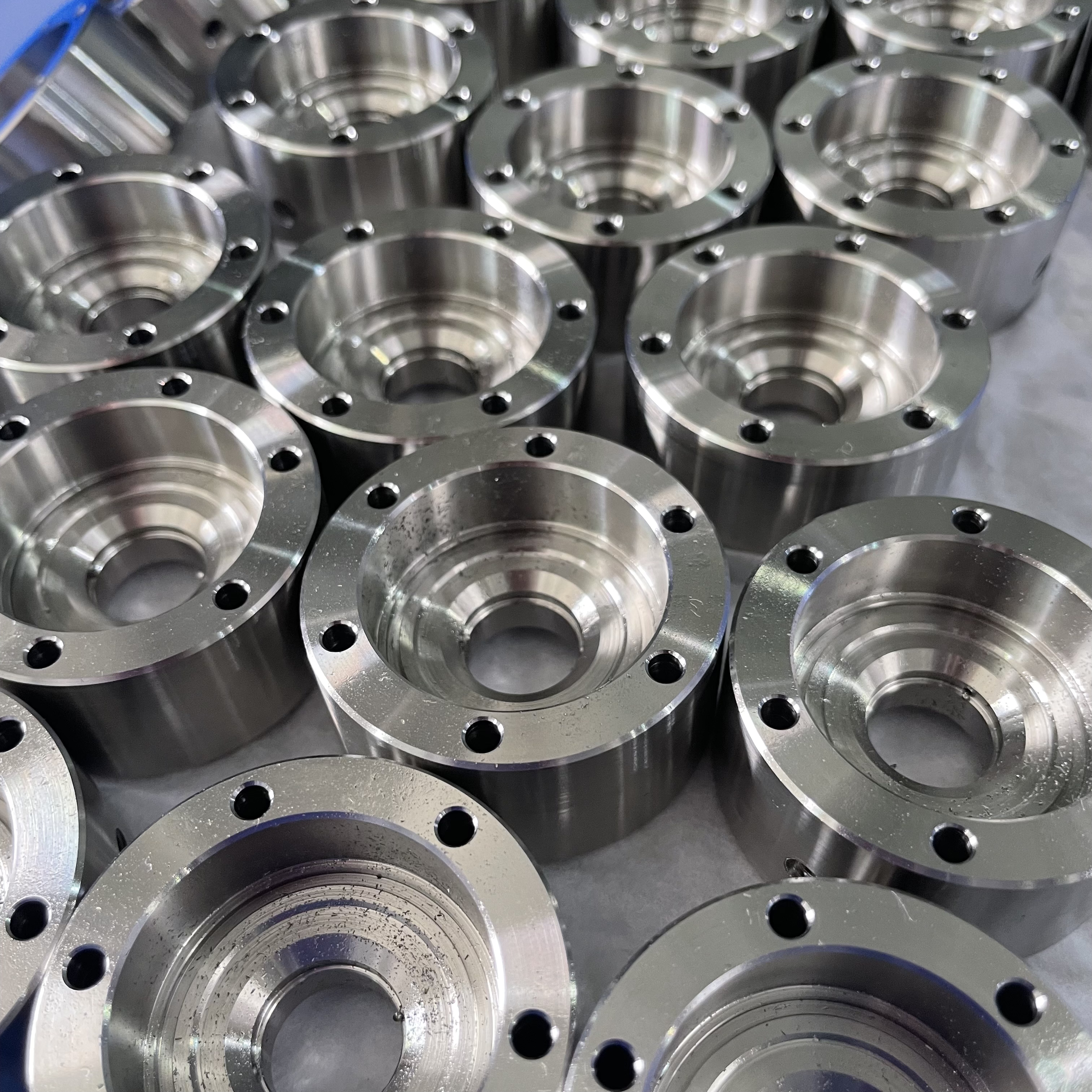How CNC Optimizes Material Waste When Working with Aluminum

CNC machining transforms how you work with aluminum by reducing material waste through unmatched precision and efficiency. Techniques like tool path optimization and adaptive control ensure minimal scrap by eliminating unnecessary cuts and adjusting in real time. For example, an aerospace company achieved a 40% reduction in aluminum waste using adaptive machining. Additionally, CNC machines strategically position parts during nesting to maximize material utilization. High-precision machining can reduce scrap by up to 30%, as seen in the automotive industry. These advancements make CNC machining a sustainable and cost-effective solution for aluminum processing.
Key Takeaways
CNC machines cut aluminum carefully, wasting less and saving money.
Nesting helps place parts smartly, using more material and wasting less.
Watching and fixing in real-time makes work better and avoids mistakes.
Using better CNC tools and teaching workers helps save material and cut waste.
Using green CNC methods saves money and helps the environment too.
The Importance of Reducing Material Waste in Aluminum CNC Machining

Aluminum as a Valuable Material
High demand and cost implications
Aluminum plays a critical role in industries like aerospace and automotive due to its unique properties. Its lightweight nature and high strength make it ideal for manufacturing components such as aircraft fuselages, engine parts, and automotive transmission cases.
Industry | Application Description |
|---|---|
Aerospace | Aluminum is used for lightweight, high-strength components like aircraft fuselage and engine components. |
Automotive | Aluminum is employed to manufacture engine blocks, transmission cases, and other critical parts benefiting from its strength-to-weight ratio. |
The high demand for aluminum drives up its cost, making waste reduction essential for manufacturers. By minimizing material waste, you can achieve significant cost savings and improve profitability.
Environmental impact of aluminum waste
Aluminum production has a substantial environmental footprint. Alumina refining and aluminum smelting account for over 90% of the industry's direct CO2 emissions. Recycling aluminum can reduce global warming and fossil fuel use by approximately 94%. By focusing on waste reduction, you not only save costs but also contribute to sustainability goals.
Challenges in Traditional Aluminum Machining
Inefficiencies and higher scrap rates
Traditional machining processes often struggle with inefficiencies that lead to higher scrap rates. Common challenges include:
Deformation during machining due to disrupted internal stresses in rolled and extruded alloys.
Difficulty achieving close tolerances without grinding, as aluminum's ductility complicates traditional processes.
Chip control issues, where long chips wrap around tools, hindering cycle times.
Chip welding, where chips adhere to cutting tools, causing tool failure.
These issues result in wasted material and increased production costs.
Limitations of manual processes
Manual machining lacks the precision and consistency required for optimal material utilization. Human error often leads to inaccuracies, further increasing material waste and scrap. Additionally, manual processes are time-consuming, reducing overall efficiency.
CNC as a Solution for Waste Reduction
Transitioning to automated machining
CNC machining offers a transformative solution to reduce CNC machining waste. By automating processes, you can eliminate human error and ensure parts meet exact specifications. This automation streamlines production, enabling high volumes of parts with minimal waste.
CNC's precision and material optimization
CNC machining excels in precision and efficiency. Programming innovations like tool path optimization and adaptive control minimize unnecessary material removal. Advanced nesting algorithms maximize material utilization, reducing scrap and cutting costs. By adopting CNC machining, you can achieve optimal material utilization and enhance sustainability in your operations.
Advanced CNC Techniques for Optimizing Aluminum Usage

Adaptive Cutting Techniques
Real-time feedback for toolpath adjustments
Adaptive cutting techniques rely on real-time feedback to optimize toolpath adjustments during machining. Continuous feedback loops collect data at every stage of the CNC machining process. This data helps you identify inefficiencies and improve accuracy. Advanced monitoring systems provide real-time insights, enabling automatic adjustments to maintain optimal machining conditions. Early detection of inconsistencies ensures better product quality and reduces costly rework. By leveraging these techniques, you can enhance precision and minimize material waste.
Minimizing waste through dynamic cutting
Dynamic cutting adjusts parameters like feed rate, spindle speed, and cutting depth based on real-time conditions. These adjustments improve machining efficiency while reducing material waste and scrap. For example, decreasing the feed rate produces smaller chips, resulting in a smoother surface finish. Increasing spindle speed accelerates material removal but may generate heat, so balancing these factors is crucial. The table below highlights key principles of adaptive cutting:
Principle | Adjustment Type | Effect on Machining Efficiency, Tool Life, and Surface Finish |
|---|---|---|
Feed Rate | Decreasing | Produces smaller chips for a smoother surface finish but reduces material removal rate. |
| Spindle Speed | Increasing | Leads to faster material removal rates but can generate excessive heat, accelerating tool wear. | | | Decreasing | Reduces heat generation and extends tool life but slows down material removal. | | Cutting Depth | Increasing | Significantly increases material removal rate but puts higher strain on the tool. | | | Decreasing | Reduces tool stress and extends tool life but slows down material removal. |
Nesting Optimization
Strategic part positioning to reduce scrap
Nesting optimization arranges multiple parts on a single sheet of material to reduce scrap. By strategically positioning parts, you can minimize leftover material and maximize material utilization. This technique ensures that every inch of aluminum contributes to the final product, reducing waste and lowering costs.
Maximizing raw material utilization
Nesting involves arranging materials to fit together with minimal leftover space. This process is essential for optimizing material usage in CNC machining. By reducing scrap material, nesting not only minimizes material waste but also supports waste reduction goals. It also has a smaller environmental impact, making it a sustainable choice for manufacturers.
Real-Time Monitoring and Adjustments
Sensors for tracking material usage
Sensors play a vital role in tracking material usage during CNC machining. In-process gauging measures the dimensions of the workpiece in real time, ensuring continuous monitoring. Tool condition monitoring systems detect signs of tool wear by analyzing vibration and cutting force. Machine health monitoring tracks factors like spindle temperature to prevent downtime. These systems help you monitor and measure waste effectively.
On-the-fly corrections to enhance efficiency
Real-time monitoring allows for immediate corrections during machining. Continuous tracking ensures dimensional accuracy and prevents scrap parts. Adjustments based on sensor data optimize machining efficiency and maintain process consistency. By preventing tool breakage and premature wear, you can achieve faster production times and reduce costs.
Toolpath and Feed Rate Optimization
Efficient cutting paths to reduce material loss
Efficient toolpath design plays a critical role in reducing material loss during aluminum machining. By carefully planning the cutting path, you can minimize unnecessary movements and ensure that every cut contributes to the final product. This approach not only reduces waste but also enhances precision and productivity.
For example, an automotive parts manufacturer recently revamped their CNC programming methods by focusing on toolpath optimization and adaptive control. This change led to a 30% reduction in scrap aluminum. Such results highlight the importance of advanced programming in achieving waste reduction and improving overall efficiency. When you implement optimized toolpaths, you can achieve similar benefits, making your operations more sustainable and cost-effective.
Optimizing feeds and speeds for aluminum machining
Balancing feed rates and spindle speeds is essential for maximizing efficiency in aluminum CNC machining. Properly optimized parameters extend tool life, reduce downtime, and improve productivity. By fine-tuning these settings, you can achieve smoother cuts and better material utilization.
Advanced toolpaths, such as adaptive clearing and high-efficiency machining, allow for deeper cuts with variable feed rates. These techniques reduce machining time while improving tool life. Machines equipped with higher spindle power and torque can handle increased feed rates without straining, enabling more aggressive cutting strategies. This approach significantly reduces cycle times and boosts throughput.
When you optimize feeds and speeds, you also enhance precision and reduce the likelihood of errors. This ensures consistent quality in your final products while minimizing waste. By adopting these strategies, you can achieve a balance between speed, accuracy, and material conservation, making your CNC machining processes more efficient and sustainable.
Benefits of CNC Machining in Reducing Aluminum Waste
Cost Efficiency
Lower material costs and improved profitability
CNC machining helps you save on material costs by reducing waste and optimizing production processes. Unlike traditional methods, CNC automates repetitive tasks and eliminates manual errors. This precision ensures that only the necessary amount of aluminum is removed, leaving minimal scrap. By streamlining operations, you can produce high volumes of aluminum parts faster and at a lower cost. Additionally, innovations in CNC programming improve machining efficiency, allowing you to maximize machine efficiency and achieve better profitability.
Reduced energy consumption during machining
Modern CNC machines consume less energy compared to traditional machining methods. Their advanced capabilities, such as optimized toolpaths and adaptive cutting, reduce machining time and energy use. By minimizing waste and improving energy efficiency, CNC machining not only lowers operational costs but also supports your sustainability goals.
Environmental Sustainability
Decreasing the carbon footprint of aluminum machining
CNC machining significantly reduces the environmental impact of aluminum processing. Its precision minimizes material waste, while energy-efficient machines lower power consumption. Additionally, CNC machining enhances recycling capabilities by enabling the reuse of aluminum chips and machining fluids. These practices contribute to reducing carbon emissions and conserving resources.
Supporting eco-friendly manufacturing practices
CNC machining aligns with eco-friendly manufacturing by promoting efficient raw material use and incorporating recyclable materials. Advanced automation reduces scrap rates, while streamlined operations conserve energy. By adopting CNC machining, you support sustainable practices that benefit both your business and the environment.
Enhanced Production Efficiency
Faster production cycles with minimal waste
CNC machining optimizes material usage and accelerates production cycles. Automated systems allow you to produce large quantities of aluminum parts without constant supervision. This efficiency reduces labor costs and boosts productivity. Additionally, CNC machines consume less power, further lowering operational expenses.
Improved quality and consistency in output
CNC machining ensures consistent quality in aluminum parts by operating with tight tolerances and advanced technologies. Automated processes eliminate human error, delivering precise and accurate results. Multi-axis machining and real-time feedback systems enhance precision, ensuring superior surface finishes and dimensional accuracy. With CNC, you can maintain high-quality standards even at scale, reducing waste and improving overall efficiency.
Practical Applications and Future Trends in Aluminum CNC Machining
Real-World Examples of Waste Reduction
Case study: Aerospace industry applications
In the aerospace industry, reducing waste is critical due to the high cost of aluminum and the need for precision. One aerospace company implemented adaptive machining techniques to produce essential aluminum components. This approach reduced scrap material by 40% and cut production downtimes by 50%. These results highlight how CNC machining can enhance efficiency and minimize waste in industries where precision is paramount.
Case study: Automotive industry innovations
The automotive sector has also embraced CNC machining to optimize aluminum usage. A leading automotive parts manufacturer revamped its CNC programming by focusing on tool path optimization and adaptive control. This change led to a 30% reduction in scrap aluminum. By adopting advanced CNC techniques, the company demonstrated how innovation can significantly lower material waste while maintaining high production standards.
Tips for Implementing Waste Reduction Strategies
Investing in advanced CNC tools and software
Investing in modern CNC tools and software can transform your machining processes. Features like tool path optimization and adaptive control reduce unnecessary material removal and prevent errors. High-precision machining ensures minimal waste, especially when working with aluminum. Additionally, energy recovery systems and efficient chip management further enhance sustainability by recycling aluminum chips and reducing energy consumption.
Training staff on precision and efficiency techniques
Proper training equips your team with the skills needed to maximize CNC efficiency. Staff trained in precision techniques can better utilize advanced tools and software, ensuring optimal material usage. Training also minimizes errors, leading to consistent quality and reduced waste. By prioritizing education, you can create a workforce capable of achieving sustainable and cost-effective machining practices.
Future Trends in CNC Machining
Integration of AI and machine learning
Artificial intelligence (AI) is revolutionizing CNC machining. AI automates programming by generating optimized tool paths based on material properties and 3D models. Real-time data analytics reduce defect rates by up to 50%, improving product quality. Predictive maintenance powered by AI lowers maintenance costs and minimizes unplanned downtime. These advancements streamline operations, enhance precision, and reduce waste, making CNC machining more efficient and sustainable.
Advancements in sustainable machining practices
Sustainability is shaping the future of CNC machining. Manufacturers are adopting energy-efficient machines and renewable energy sources to lower carbon emissions. The integration of additive manufacturing reduces material waste by building parts layer by layer. Additionally, biodegradable materials and circular economy principles are gaining traction, promoting recycling and eco-friendly production. These trends ensure that CNC machining continues to evolve as a sustainable and efficient solution for aluminum processing.
CNC machining transforms aluminum processing by reducing waste and optimizing material usage. Techniques like adaptive cutting and real-time monitoring enhance sustainability by minimizing errors and tracking energy consumption. High-precision machining prevents material loss, while improved CNC programming boosts efficiency. Adaptive machining adjusts to inconsistencies, ensuring consistent results. These strategies not only lower costs but also support greener manufacturing practices. By adopting CNC, you can achieve sustainable operations and maximize profitability.
FAQ
What is CNC machining, and how does it reduce aluminum waste?
CNC machining uses computer-controlled tools to cut and shape materials with precision. It reduces aluminum waste by optimizing toolpaths, adjusting cutting speeds, and minimizing errors. This process ensures efficient material usage and less scrap.
How does nesting optimization help in waste reduction?
Nesting arranges parts strategically on a material sheet to minimize leftover scraps. By maximizing material usage, you reduce waste and save costs. This technique ensures that every inch of aluminum contributes to the final product.
Can CNC machining improve sustainability in manufacturing?
Yes! CNC machining supports sustainability by reducing material waste, lowering energy consumption, and enabling recycling of aluminum chips. These practices help you achieve eco-friendly manufacturing goals while maintaining efficiency.
What industries benefit most from CNC machining with aluminum?
Industries like aerospace, automotive, and electronics benefit greatly. They rely on aluminum for lightweight, durable components. CNC machining ensures precision and reduces waste, making it ideal for these sectors.
Is CNC machining cost-effective for small-scale operations?
Absolutely! CNC machining minimizes material waste and energy use, which lowers costs. Its precision reduces errors and rework, making it a cost-effective choice even for small-scale operations.
💡 Tip: Start with basic CNC tools and software to see immediate benefits in waste reduction and efficiency.
See Also
Benefits Of Utilizing CNC Machining Services For Aluminum
Key Material Considerations For CNC Precision Machining
Best Practices For Achieving Scratch-Free CNC Aluminum Machining
Enhancing Quality Through Advanced CNC Precision Machining Techniques
About US
Follow Us
Your prototype holds unparalleled significance, and we deeply value its uniqueness. Collaborating with you during the preparation phase for running your prototype or parts is a commitment we gladly embrace. Whether it's a single part or a complex assembly, we are dedicated to selecting the optimal tools and pathways to bring your envisioned product to life.
At Precision Fab CNC Machining, we specialize in producing parts for prototypes, short runs, and high-volume production. Our prototyping machine capabilities extend across metal, plastic, and wood machining, with welding fabrication services available to complement and finalize your prototype if required.
Address
Address: Room320 10F, Building A,Nanshan international building, Dayawan District, Huizhou, Guangdong, 516001 China
Contacts
billy@timaycnc.com

